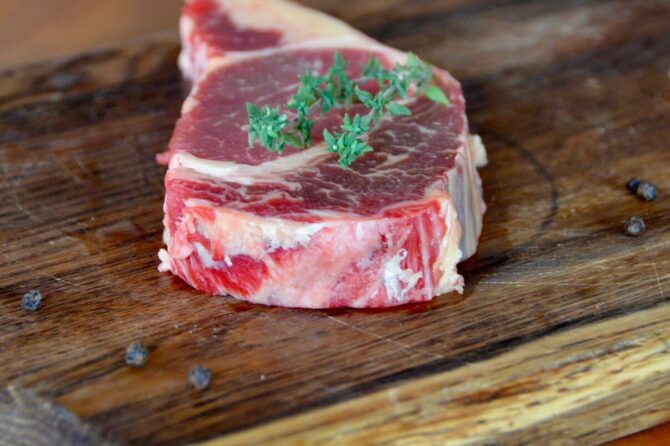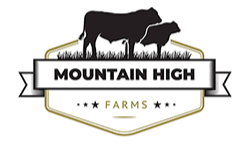
Industrial Meat vs. Naturally Raised Meat: What’s Really on Your Plate?
By the mid-20th century, the world’s meat industry had transformed. Animals once grazing open pastures were moved into confined barns and feedlots, fed a steady diet of corn, soy, and concentrated rations. It was efficient, it was cheap, and it promised endless supplies of meat for growing cities. But efficiency had a cost.
“Once animals were moved into confined systems, we saw an explosion in productivity,” says Dr. Karen Lewis, a food systems researcher at the University of Minnesota. “But at the same time, we lost nutritional quality, animal welfare, and ultimately consumer trust.”
From Barns to Feedlots
The shift was driven by technology – refrigerated transport, synthetic fertilizers, and antibiotics – that allowed farmers to keep more animals in less space. Disease, inevitable in crowded barns, was controlled with veterinary drugs. Animals fattened faster on grain-based rations, but the meat they produced was fundamentally different.
Nutritional Changes
A 2014 Canadian study compared beef from feedlot cattle to that of pasture-raised animals and found that grain-fed meat had more total fat and less omega-3 fatty acids. “It’s a completely different nutritional profile,” says Lewis. “Grain-fed beef is calorie dense, but grass-fed beef carries more of the nutrients that support human health.”
Armenia’s Pastoral Traditions
In Armenia, the story of meat and farming is deeply tied to the land. For centuries, cattle, sheep, and goats grazed freely on mountain pastures, following seasonal transhumance routes from lowland valleys to alpine meadows. Pasture-raised meat was not a luxury – it was the way things were done.
“Here in Tavush, our grandparents never kept cows locked in barns,” recalls Arman Mnatsakanyan, a small-scale cattle farmer in northern Armenia. “The animals grazed on herbs, clover, and wild grasses. That’s what gave the meat its special taste.”
Local Breeds and Flavor
Local breeds such as the Armenian Brown cattle and Balbas sheep have been shaped by rugged environments. Hardy and adaptable, they thrive on diverse forage and long walks across steep terrain. Farmers note that meat from these breeds carries a flavor profile that reflects the high mountain pastures themselves – aromatic, lean, and rich.
Why Angus in Armenia
These local breeds today, however, are mostly degraded and lack an important feature: genetic ability to fatten efficiently on pastures. Thus, Mountain High Farms imported purebred Black Angus beef and raises them on the alpine highlands of Dilijan National Park, a venue famous for its vast diversity of vegetation.
“In Armenia, meat isn’t just food, it’s culture,” says Vrej Boghossian, the owner of the Orient boutique butcher shop in central Yerevan. “Khorovats, lamb khashlama, even steaks and simple soups – these dishes taste different when the meat comes from animals raised on Armenia’s highland pure pastures.”
A Return to Nature
The global movement toward natural and pasture-raised meat resonates strongly in Armenia, where many smallholders never abandoned traditional methods. There is also a new wave of farmers consciously reviving pasture-based systems, sometimes integrating modern regenerative practices. Mountain High Farms is a leading example of that movement in Armenia.
What the Science Shows
Scientific research supports what farms like Mountain High Farms see every day. Studies consistently show that naturally raised, pasture-fed beef is higher in omega-3 fatty acids, conjugated linoleic acid (CLA), and vitamins A and E. These compounds have been linked to heart health, reduced inflammation, and potential anti-cancer properties.
What Consumers Notice
Consumers feel better buying meat from a farmer they know. The knowledge that the cow was not pumped full of antibiotics, combined with richer taste, leads many to pay more for that peace of mind. This choice is especially common among families buying meat for their children.
This shift is not only about nostalgia or preference – it reflects growing evidence that animals raised on pasture produce healthier, higher-quality meat. Researchers at the University of California, Davis, for example, have shown that pasture-raised beef contains higher levels of omega-3 fatty acids and antioxidants compared to grain-fed beef. For many consumers, natural meat represents a return to authenticity, flavor, and trust.
Nutrition, Animal Health, and Human Health
Industrial systems, designed for efficiency, pack animals tightly together, creating stress and a breeding ground for disease. Antibiotics are used routinely, not only to treat illness but often to prevent it.
“We now know that routine antibiotic use in livestock is a major driver of global antibiotic resistance,” says Dr. Samuel Ortiz, a public health scientist at the World Health Organization. “It’s one of the biggest health threats we face.”
Healthier Herds on Pasture
Pasture-based systems tell a different story. Animals raised outdoors have lower stress, stronger immune systems, and require far fewer interventions.
“Healthy animals mean healthy meat,” explains Alik Naghdalyan, veterinarian at Mountain High Farms. “We spend less on medicine and more time improving our pastures.”
For consumers, the outcome is food that is both cleaner and nutritionally superior.
Why Traceability Matters
Traceability – the ability to follow a product back through every stage of its production – has become a defining issue in the debate over meat. It means knowing where the animal was raised, what it ate, and whether it was treated with antibiotics or hormones.
The Industrial Blind Spot
In industrial supply chains, true traceability is almost impossible. Animals are pooled from multiple farms, processed in huge facilities, and shipped widely. Consumers may see a country of origin, but little else. Meat is often anonymized, with cuts from thousands of animals processed and packaged together. Transparency is limited, and accountability is diffuse.
Small Farms, Clear Lines
In contrast, smaller-scale farms producing naturally raised meat often provide direct traceability. Consumers can know the farm, sometimes even the individual pasture, where their meat originated. This connection fosters trust and encourages responsible farming. As the European Food Safety Authority notes, robust traceability systems are essential for food safety, consumer confidence, and sustainable market growth.
Armenia’s Advantage
In Armenia, small and medium farms dominate much of the traceable sector, and many farmers sell directly. Mountain High Farms, for example, sells online via the buy.am platform.
“When you buy meat from us, you can come see the field where that cow grazed and how the beef was raised,” says Aram Mkhitaryan, Mountain High Farms Operations Manager. “That’s traceability.”
Meanwhile, Russian and foreign industrial farms are flooding the Armenian meat market with cheap, untraceable imports – including Angus beef – often raised in closed barns under intensive systems. This makes it nearly impossible for consumers to know the true origin or quality of the meat they are buying.
What People Are Willing to Pay For
Research shows consumers value transparency. In Spain, a 2022 study found shoppers were willing to pay significantly more for meat labeled with animal welfare and traceability guarantees. Similar studies in Asia found that up to 80% of buyers were willing to pay a premium for meat they could trace to its source. A study conducted in Logan, Utah, likewise found that consumers are willing to pay a premium for meat products with traceability information, reflecting growing demand for transparency in the food supply chain.
“Traceability builds trust,” says Aram Poghosyan, a farmer raising purebred Dorper sheep. “It reassures people that their food is safe, ethically raised, and aligned with their values.”
A Tale of Two Systems
The story of industrial and naturally raised meat is ultimately about two competing visions. Industrial farming delivers cheap meat, but with hidden costs: lower nutritional quality, animal welfare concerns, and risks to human health. Naturally raised meat offers healthier animals, healthier food, and – in Armenia’s case – continuity with centuries-old traditions.
“I don’t just sell meat,” says Vrej Boghossian of Orient Butchery, which sells Mountain High Farms Angus beef. “I sell honesty. My customers know me, they know the farm I sell the meat from, and they trust me.”
Conclusion
For Armenians, pasture-raised meat is more than a product – it is an expression of cultural heritage, a connection to the land, and a promise of healthier food for future generations.
Leave a reply


Leave a reply